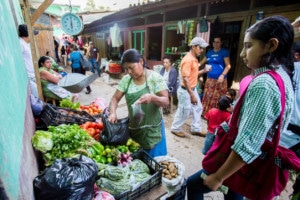By Rotary Service and Engagement, October 2, 2018, Published in Rotary International
The United Nations reports 470 million jobs are needed globally for new entrants to the labor market between 2016 and 2030. Unemployment, underemployment, lack of economic opportunity, lack of appropriate training, and the absence of social safety nets lie at the core of poverty. For the poor, labor is often the only option to improve well-being. Creating productive employment opportunities is essential for reducing poverty and achieving sustainable economic and social development, and for providing income security and empowerment especially for women, people with disabilities, youth, and the extremely poor.
Rotary clubs all over the world work with communities to advance local economies. Every community has different needs and different opportunities for service. High-impact projects begin with a community assessment with active involvement and commitment from community members. If your assessment reveals economic and community development needs, they likely fall into one or more of the following categories:
- Youth unemployment
- Obstacles to entrepreneurship
- Barriers to agricultural opportunities and livelihood
- Lack of resources to address extreme poverty

Adelante Foundation microcredit client Dona Ninfa (center) sells vegetables at the market in La Esperanza, Honduras. The Adelante Foundation’s microcredit program, which offers women loans and business training aimed at increasing their household incomes, is supported by a Rotary global grant.
Below are four ways you can take action to address these needs.
1) Provide skills/ leadership training and job network to youth
Skills and leadership development is an important component of youth employment and poverty reduction. Youth leadership development can contribute to lifting individuals out of poverty by improving access to work, increasing productivity, and fostering sustainable economic growth.
Skills development can occur in formal, informal, and on-the-job settings. These trainings should help individuals become fully and productively engaged in employment opportunities or job creation. The trainings should reflect the changing demands and opportunities of the community’s economy and labor market.
2) Provide microloans and financial literacy training to women entrepreneurs
Through microloans, millions of struggling individuals with no credit history, collateral, or steady income can get access to basic financial services. These small, low-interest loans provide seed money to start, sustain, or expand an income-generating business venture.
Microloan programs can be beneficial, especially for women, in both rural and urban communities. Entrepreneurs in rural communities may borrow money for cattle acquisition or fattening, dairy farming, agricultural cultivation, bamboo making, weaving, setting up small retail shops in their homes, and so on. Entrepreneurs in urban areas use microloans, for example, to become street vendors, rickshaw drivers, or tailors.
3) Identify local barrier barriers to agricultural opportunities/livelihood
According to the United Nations, in 2013, an estimated 842 million people worldwide suffered from chronic hunger and 98% of them lived in developing regions. Successful agricultural projects result from thorough community assessments and lead to increased and more secure income from agriculture. Identifying local barriers and assets, along with appropriate intervention plans, can help communities sustain and accelerate agricultural growth. Community involvement is crucial for sustainable change.
4) Adopt-a-village
Adopt-a-village projects address extreme poverty holistically in communities that lack the resources to meet basic human needs. With active involvement from the community, these projects invest in the leadership skills of community members in one location to implement a multifaceted but coordinated strategy in that community. The ultimate project goal should be to increase self-sufficiency of individuals and families and help them revitalize their community by alleviating extreme poverty. A successful adopt-a-village initiative will result in a community-created plan to continue local development and improve lives beyond the project.

Leave A Comment
You must be logged in to post a comment.